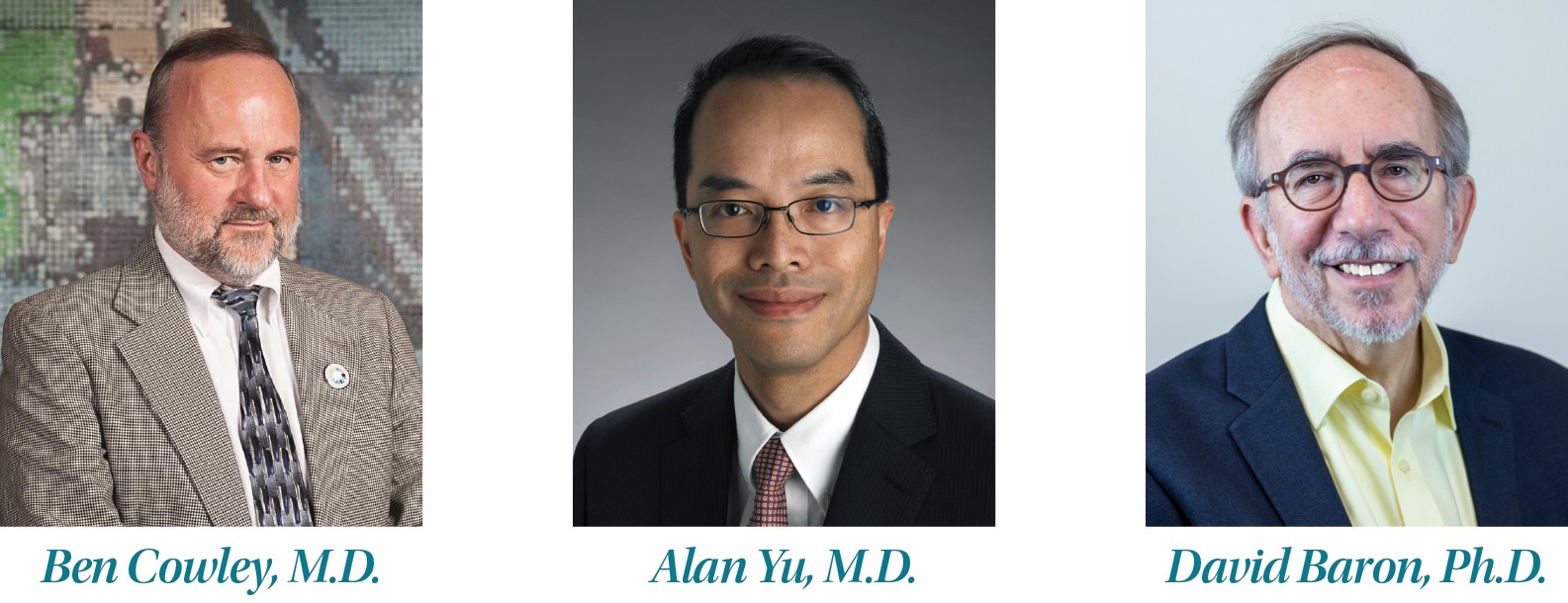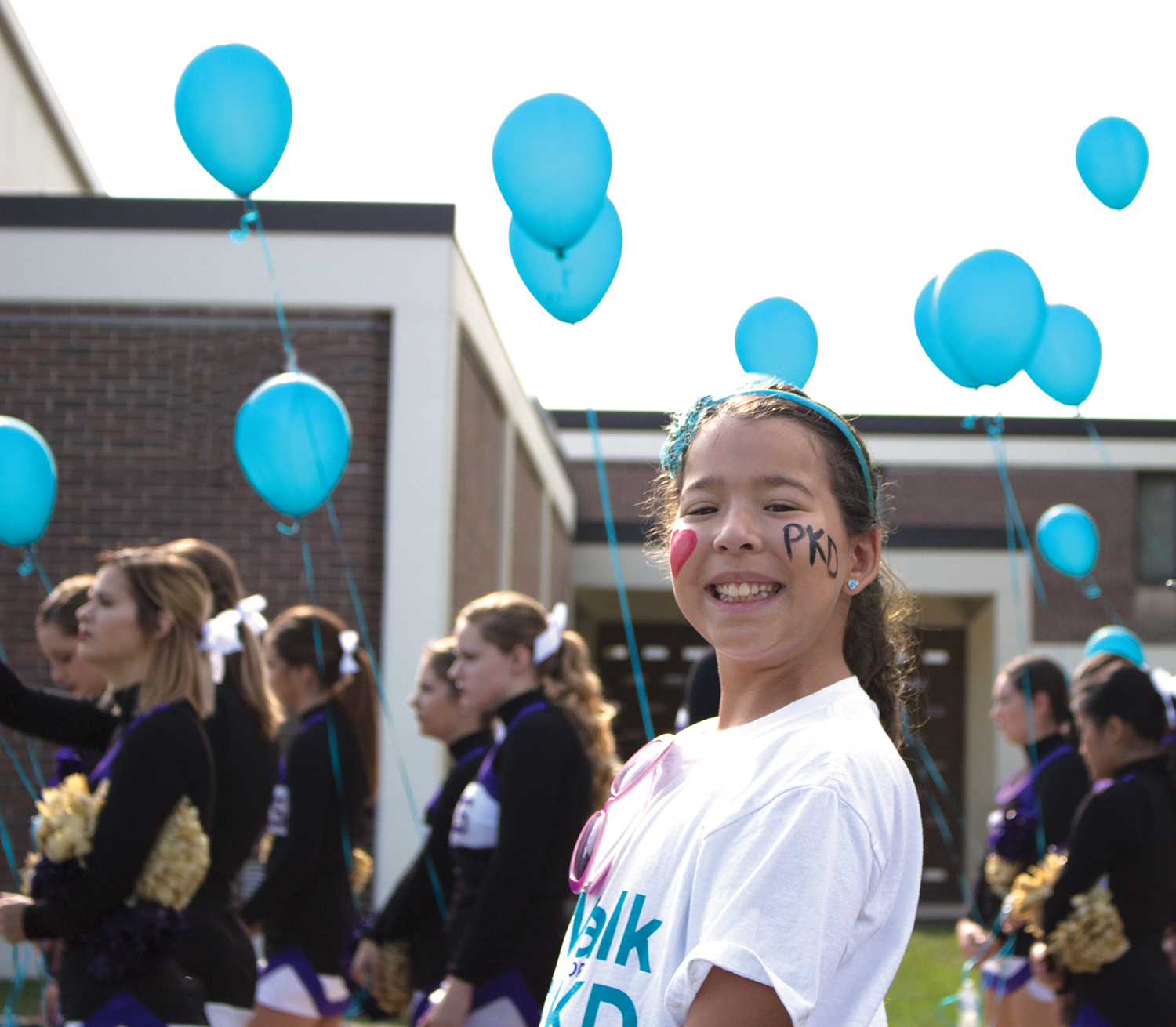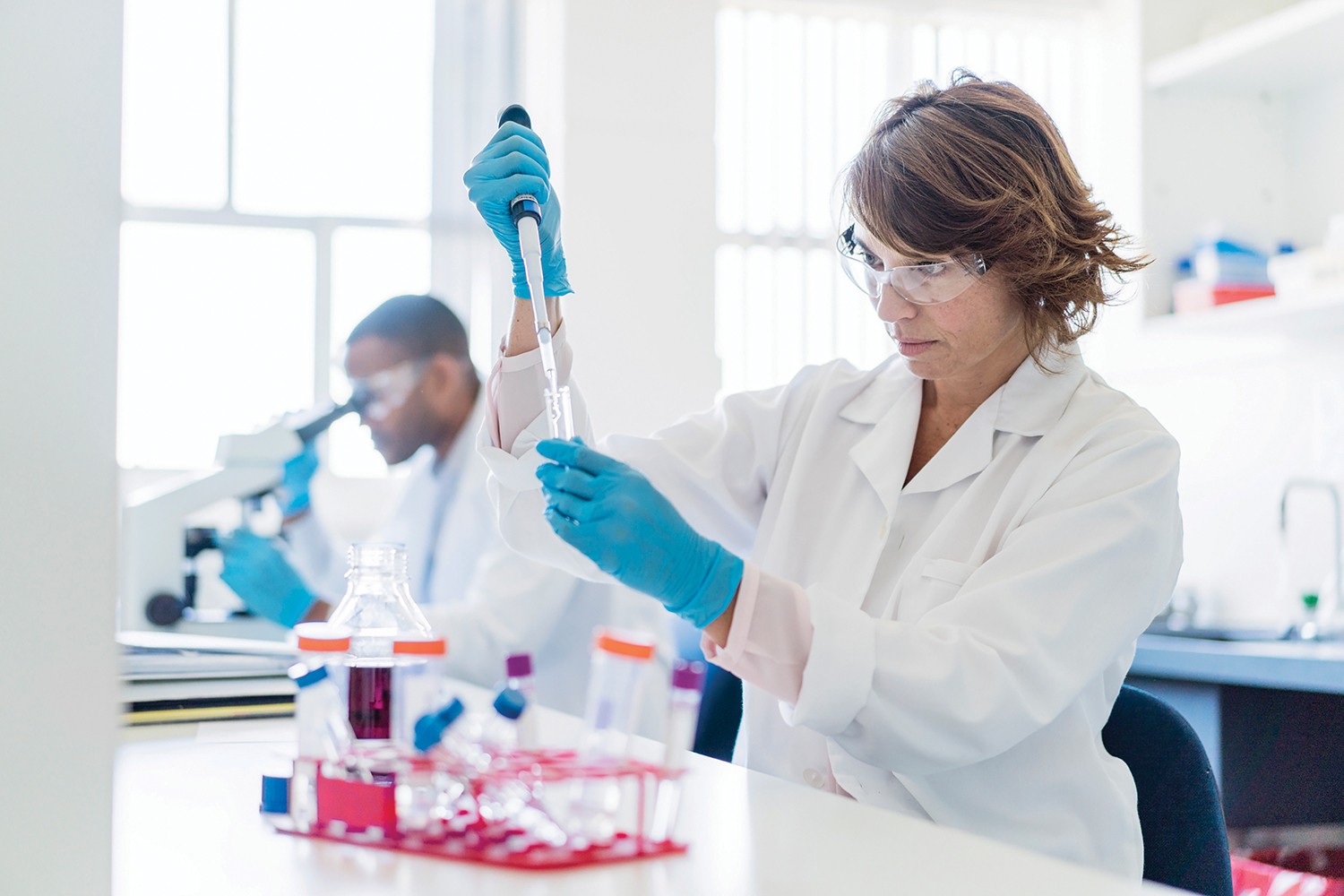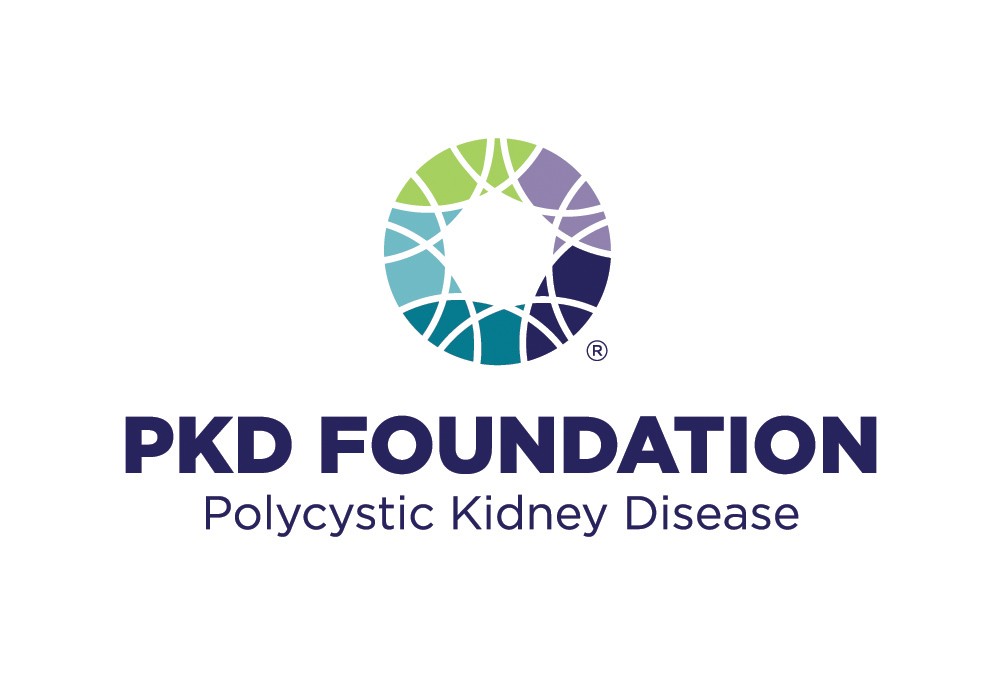PKD Foundation

New FDA-Approved Drug Gives PKD Patients Inspired Hope
When facing a chronic illness, hope is a valuable asset.
Photos courtesy of PKD Foundation
Approximately 12.5 million people worldwide have one of the most common life-threatening genetic diseases. That number could be even higher, as many individuals may not even be aware they have the disease for which there currently is no cure, but for which there now exists a spring of hope and a promise of better tomorrows.
Polycystic kidney disease, or PKD, is an inherited disease that causes cysts to develop primarily in the kidneys, causing them to enlarge and lose function over time. These noncancerous cysts are round sacs containing fluid and can vary in size, some of them growing quite large. The disease often causes serious complications, such as high blood pressure, pain, infection, and ultimately kidney failure. The disease can vary greatly in its severity, and some complications may be preventable. There are two types of PKD: autosomal dominant polycystic kidney disease (ADPKD) and autosomal recessive polycystic kidney disease (ARPKD). The former is the most common and typically becomes symptomatic between the ages of 30 and 40. The latter is a much rarer form, most often involving infants and children. It affects 1 in 20,000 live births, and about 20% do not survive the neonatal period. Sometimes the symptoms might not appear until later in childhood or even during adolescence. Treatments for PKD can include medication to control high blood pressure, pain relievers and cyst reduction. For many patients, dialysis or a kidney and sometimes liver transplant might be needed.
For patients living with PKD, what has been an illness dependent upon management of the symptoms over the course of a lifetime, now for the first time have the option of specific treatment through the newly FDA-approved drug JYNARQUE™ (tolvaptan), announced in April of this year. This is the first ADPKD-specific treatment in the U.S. and a true milestone in the research efforts for PKD.
“This is a huge step forward for the PKD community,” smiled Nicole Harr, Director of Community Engagement for the PKD Foundation, headquartered here in Kansas City. “We are so excited to be able to announce that the FDA has approved the first treatment for ADPKD. I am beyond grateful to all of the researchers, clinicians and patients that participated in clinical trials and helped bring the first treatment to patients.”

Ben Cowley, M.D., Vice-Chair/Past-Chair of the PKD Foundation Board of Trustees, also expressed his enthusiasm for this exciting news.
“It’s official,” he noted. “Tolvaptan has been approved by the U.S. Food and Drug Administration as a treatment for ADPKD. This is a milestone for the PKD community (and) is just the beginning in the fulfillment of the vision of PKD Foundation Co-founder, Dr. Jared Grantham. Jared always believed that research to understand PKD pathogenesis was the key to developing effective therapies for PKD, and the development of tolvaptan exemplifies that idea.”
Standing at the epicenter of this groundbreaking news is the University of Kansas Medical Center Jared J. Grantham Kidney Institute. As one of four kidney centers nationwide awarded P30 NIH grants, KUMC is a proud beneficiary not only of much-needed funding to continue research efforts into further treatments and hopefully a cure for PKD, but it is also where this incredible success story actually begins.
The PKD Foundation, founded in Kansas City, is the largest private funder of PKD research. Over the last three decades, the Foundation has invested in excess of $42 million in basic clinic research, nephrology fellowships and scientific meetings with one clear goal in mind: to discover and deliver treatments and a cure for PKD. This Foundation is the only organization in the United States solely dedicated to finding treatments and a cure for PKD and to simultaneously improve the lives of those it affects. This is accomplished in many ways, including ongoing research, education, advocacy, support and awareness on a national level. Additionally, the Foundation provides direct services to local communities across the country. The individuals behind the PKD Foundation work tirelessly to give one primary gift to PKD patients, friends and families: hope. It’s a tall order, and one that has not been without its fair share of stumbling blocks, but had it not been for two prominent individuals within the Kansas City community, such hope would probably never exist.
In 1982, Jared J. Grantham, M.D. and businessman Joseph H. Bruening founded the PKD Foundation with a goal of finding treatments and a cure for the disease. It was Dr. Grantham’s mission as an outstanding clinician and researcher to help PKD patients, and while he sadly passed away in 2017, the Foundation proudly carries on his legacy, never wavering from his vision. Before the PKD Foundation was established, little was being done in terms of research on the disease, and Bruening, whose wife and daughter had PKD, wanted to change that dynamic. He contacted Dr. Grantham and indicated he would be interested in contributing funds toward research of the condition. The rest, as they say, is history.
When these two men began their mission, not much was known about the disease, nor had the genes even been identified. Now headquartered in Kansas City, millions of dollars have been invested to allow researchers to continue this exciting quest and over the course of the past 35 years, hope is transforming into promise. It was Dr. Grantham and Mr. Bruening who paved the way, inspiring myriad fundraisers over the years which has resulted in the millions of dollars donated to their cause. These funds have generously allowed a host of researchers, clinicians, volunteers and more to work towards finding a cure for PKD.

On a local level, the Kansas City Chapter of the PKD Foundation, which serves as an excellent resource for patients and families alike, hosts a variety of fundraisers throughout the year. Its major fundraiser, the Walk for PKD, raises approximately $55,000 – $60,000 locally each year. Annually, the Walk for PKD raises nearly $2 million dollars on a national level as other PKD Chapters host Walk for PKD events across the United States.
Among the Foundation’s many trusted advocates and scientific resources today include Alan Yu, M.D., and David Baron, Ph.D. These two gentlemen stand among a distinguished list of researchers, are Vicente Torres, M.D., Jim Calvet, Ph.D., Ronald Perrone, M.D., Terry Watnick, M.D., Arlene Chapman, M.D., Steve Somlo, M.D., Greg Germino, M.D., and many others. The Foundation has also been supported by numerous institutions, such as the Mayo Clinic Translational PKD Center, the University of Kansas, Yale University, Emory University, the University of Chicago and the University of Maryland.
“This is a Kansas City success story,” stated Dr. Alan Yu, who is a general nephrologist and the Medical Director of the internationally- acclaimed University of Kansas Medical Center Jared J. Grantham Kidney Institute. “All of the basic science started here at the University of Kansas Medical Center with Dr. Grantham, considered the father of PKD research. He did the work that formed the basis of the discovery of this new drug. It was his colleague, Dr. Vincent Gattone, who had the idea to repurpose this class of drug for PKD and for which KU owns the patent. Many of the clinical trials originated at KU or participated in a large consortium as such. It’s a very inspiring story. Although a cure is not imminent, it is a hot topic of research within the kidney community, thanks to Dr. Grantham.”
Providing further insight into the newly-approved drug, Dr. Yu indicated, “This drug is essentially the same drug used to treat hyponatremia (a condition that occurs when sodium levels in the blood are too low) but under a different brand name. It will be used (for PKD patients) in different ways. The primary goal of the drug is to prevent kidneys from deteriorating to the point of the patient needing dialysis or a kidney transplant.”
Dr. Baron, Chief Scientific Officer of the PKD Foundation, has a distinguished background in biomedical sciences and drug development and has been highly instrumental in the advocacy of research for PKD. As a PKD patient himself and an advocate for others, he reflected on the reach this disease has throughout the United States and on a global level.

“The dominant version, ADPKD, is the most common monogenetic potentially fatal disease of all,” he emphasized. “Between 500,000 and 600,000 people in the U.S. and over 12.5 million worldwide have the disease. It is an equal opportunity mutation and can be found in all races, demographics, and geographies.”
However, Dr. Baron noted that although the disease is a common genetic illness, the FDA refers to it as a rare or orphan disease.
“And of all the rare and orphan diseases, there are treatments and cures for only about five percent of them,” he expressed.
Does Dr. Baron visualize a cure in the future? Certainly, and while perhaps not in the immediate future, he does maintain optimism in that regard.
“A cure is definitely something to think about, especially with the advances we have in stem cell technology and new innovations such as CRISPR,” he indicated.
Now that the new drug to treat this disease has been approved, what does that mean for PKD patients?
“Unlike any other chronic kidney disease, with PKD the kidneys grow over time as the cysts grow, bumping up on and crowding out normal kidney tissue to the point where the cystic kidney can no longer function,” explained Dr. Baron. “Tolvaptan blocks the receptors in the kidney for the hormone secreted by the pituitary gland in the brain that ‘instructs’ the kidney to conserve water. In ADPKD, this hormone, vasopressin, causes cysts to grow instead of conserving body water. If you can decrease cyst growth over time, you can delay fate – the requirement for dialysis or transplant.”

The ideal candidate for the new drug, according to Dr. Baron, would be a younger adult patient who has rapid disease progression, but does not yet need renal replacement therapy.
“Not all PKD patients will need a transplant or dialysis,” Dr. Baron said. “If a patient is young and has large kidneys, he or she will benefit most from this drug.”
It should be noted tolvaptan has been approved for the treatment of ADPKD in Japan, Canada and Europe. Now that it has been approved in the United States, Dr. Cowley asserted it will “undoubtedly not be the last therapy for PKD and perhaps not the best. But it is the first. And for that we can all be proud and grateful.”
Even though a cure is not yet in sight, the PKD Foundation maintains its clear vision that one day, it will end PKD. By partnering with the PKD Foundation, you can turn your compassion into action and become a Hero for Hope today.







